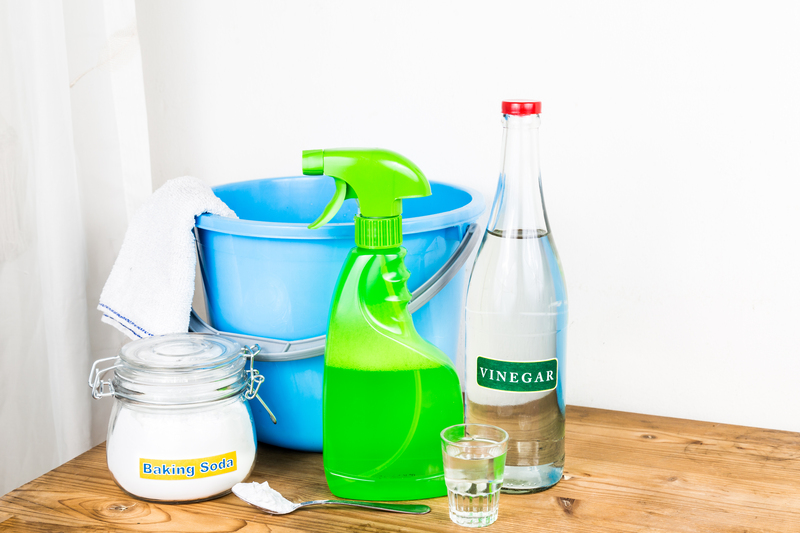Secrets to Removing Persistent Damp Smells
Posted on 12/06/2025
The Ultimate Guide to Removing Persistent Damp Smells
Have you noticed an unpleasant, musty odor that refuses to go away in your home or property? Persistent damp smells are a common nuisance for many homeowners, often signaling underlying moisture problems. In this comprehensive guide, we'll unveil the secrets to removing persistent damp smells efficiently, restoring freshness and comfort to your living spaces. This step-by-step article is packed with professional tips, expert knowledge, and actionable advice to help you tackle those stubborn musty odors once and for all!

Understanding Where Persistent Damp Smells Come From
Before you can successfully banish musty and persistent damp odors, it's critical to understand what causes them.
- Moisture buildup: High humidity, water leaks, or poor ventilation allow moisture to settle, creating the perfect environment for unpleasant smells.
- Mold and mildew: These fungi thrive in damp areas and are often the primary culprits behind persistent odor problems.
- Absorbent materials: Carpets, furnishings, and fabrics can trap moisture and smells, releasing them over time.
- Poor airflow: Insufficient ventilation leads to stagnation and the accumulation of musty air.
By addressing the underlying causes and not just masking the scent, you'll achieve long-lasting, odor-free results.
Step 1: Identify the Source of Dampness
To permanently remove persistent damp smells, start by finding where the moisture is coming from.
Common Sources of Damp Smells
- Leaks: Check pipes, roofs, walls, and windows for leaks. Even small drips can create a persistent damp odor.
- Poor ventilation: Bathrooms, basements, and kitchens often lack sufficient airflow, causing moisture and odors to accumulate.
- Condensation: Droplets on windows or walls indicate excess humidity that can seep into materials.
- Flooding or water damage: Recent floods or overflows can leave behind long-lasting dampness and musty smells.
Tip: Use your nose--follow the strength of the smell. Damp odors are often stronger close to the source, such as behind a cupboard or under a floorboard.
Step 2: Eliminate Moisture and Dry Out the Area
Once you've identified the source, acting fast to dry out the area is key in eliminating persistent damp odors.
Effective Drying Techniques
- Increase ventilation: Open windows and doors. Use fans to circulate air and speed up the drying process.
- Deploy a dehumidifier: These devices are excellent for extracting moisture from the air and fabrics. Choose one with the appropriate capacity for your room size.
- Use moisture absorbers: Simple solutions like silica gel, activated charcoal, or commercial moisture traps are ideal for wardrobes and small spaces.
- Heat the space: Warm air holds more moisture. Use heaters to raise the temperature and accelerate evaporation.
Pro tip: For severe water damage, consider calling a professional restoration service equipped with industrial dryers and expertise in removing persistent damp smells.
Step 3: Deep Clean the Affected Areas
Moisture often leaves behind invisible mold spores and bacteria, which are responsible for lingering smells. Deep cleaning is essential to remove contaminants and eradicate the source of odor.
Top Cleaning Strategies for Damp Smells
- Wash fabrics: Launder curtains, cushion covers, and bedding with hot water and add vinegar or baking soda to neutralize odors.
- Carpet and upholstery cleaning: Use a steam cleaner with a disinfectant solution or hire a reputable carpet cleaning service.
- Hard surfaces: Scrub walls, floors, and tiles using a mixture of water and white vinegar, or a commercial mold remover.
- Remove or replace: Severely contaminated materials like soaked carpets or wallboards might need to be replaced to achieve full odor removal.
Note: Always wear gloves and a mask when cleaning mold or heavily contaminated areas to protect your health.
Step 4: Neutralize Remaining Odors
Even after cleaning, some stubborn damp smells can linger. Use odor neutralizing methods to complete the job:
- Baking soda: Sprinkle on carpets and upholstery, leave overnight, and vacuum thoroughly.
- White vinegar: Place bowls of vinegar in the affected room--they absorb and neutralize smells naturally.
- Activated charcoal: An effective odor absorber, available at pet stores and home centers.
- Commercial odor absorbers: Products like OdoBan or DampRid can clear out persistent damp odors.
Essential oils (such as tea tree, eucalyptus, or lavender) can add a pleasant scent while providing some antimicrobial protection.
Step 5: Prevent Persistent Damp Smells from Returning
Once your home is fresh again, keep it that way! Preventing damp and musty odors is easier than removing them.
Best Prevention Strategies
- Fix leaks immediately: Never ignore dripping taps, loose tiles, or cracked seals.
- Maintain proper ventilation: Use extractor fans in bathrooms and kitchens, and open windows regularly to promote healthy airflow.
- Use a dehumidifier: Especially in basements, crawl spaces, or laundry areas where moisture can accumulate.
- Keep gutters clear: Ensure water is directed away from your house to avoid penetrating damp.
- Insulate your property: Well-insulated walls and windows reduce condensation and moisture ingress.
- Store items properly: Avoid packing boxes or clothes tightly in corners or against cold external walls.
Special Considerations: Dealing with Persistent Damp Smells in Different Areas
1. Basements and Cellars
Basements are notorious for persistent damp odors due to their location below ground level and lack of ventilation.
- Install a dedicated dehumidifier.
- Waterproof walls and floors with a sealant coating.
- Ensure any exterior drainage is clear and functional.
2. Bathrooms
Frequent use of water means bathrooms are hotspots for musty odors.
- Always use an extractor fan when bathing or showering.
- Wipe down shower walls and floors after use.
- Check for leaks around the toilet and sink.
3. Kitchens
In the kitchen, damp smells can occur due to condensation or leaks.
- Regularly check under sinks and behind appliances for damp spots.
- Don't leave wet cloths or sponges lying around.
- Use extractor hoods to eliminate moisture from cooking.
4. Bedrooms and Living Rooms
Bedrooms often pick up musty, persistent odors because of fabric-covered furnishings and infrequent airing.
- Open windows daily, even in winter.
- Vacuum carpets and upholstery regularly with baking soda.
- Avoid blocking radiators or vents with furniture.
Common Mistakes to Avoid When Removing Damp Smells
- Just masking the smell with air fresheners: This won't solve the underlying problem.
- Delaying repairs: Waiting to address leaks or damp patches allows the odor to set and mold to spread.
- Overuse of chemicals: Harsh cleaning products can cause further damage or pose health risks--opt for natural alternatives first.
- Forgetting hidden spaces: Always check under floorboards, behind furniture, and inside cupboards where odor can hide.
FAQ: Removing Persistent Damp Smells
-
How can I tell if the smell comes from mold?
Mold produces a distinctive earthy, musty odor. Look for visible spots and black, green, or white discoloration on surfaces. -
Are persistent damp odors harmful?
Prolonged exposure can impact health, especially for asthma or allergy sufferers. Eliminating the source promptly is vital. -
How long will it take to remove persistent damp smells?
Depending on severity, total removal can take from a few days to several weeks. Immediate action speeds up recovery. -
What should I do if the smell comes back?
Re-assess for recurring leaks or moisture sources. Persistent return may indicate a need for professional assessment.

Conclusion: Banish Persistent Damp Smells for Good
Dealing with persistent damp smells doesn't have to be a losing battle. By identifying the source, eliminating moisture, cleaning deeply, and neutralizing remaining odors, you can restore your home to its freshest state. Remember, prevention is the best cure. Maintain good ventilation, act swiftly on any signs of dampness, and adopt a proactive cleaning routine.
With these secrets to removing persistent damp smells, unpleasant musty odors will soon be a thing of the past. Enjoy a healthier, more inviting, and odor-free environment--starting today!
Still struggling?
For severe cases where the damp smell persists despite your best efforts, don't hesitate to consult a professional mold and damp specialist. They have advanced tools and expertise to detect hidden problems and ensure your property is safe, dry, and sweet-smelling.



